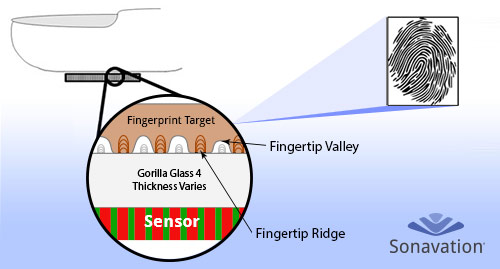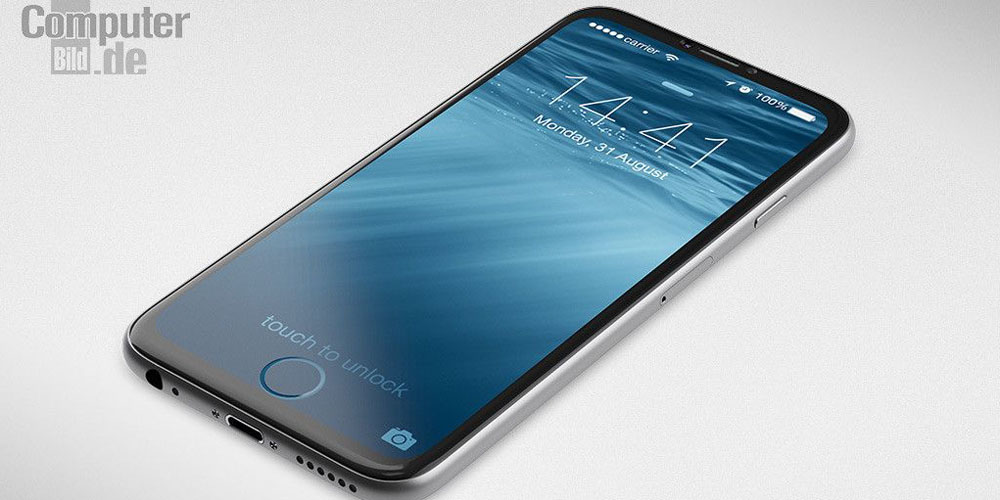A recent report by DigiTimes, a somewhat accurate Taiwanese trade publication, contended that Apple has developed in-house technology for embedding Touch ID sensors into the screen, potentially eliminating the need for the physical Home button.
Tuesday, a security technology firm called Sonavation provided a glimpse into how Home button-free iPhones could be engineered as it announced a breakthrough 3D fingerprint scanning technology embeddable under the Corning Gorilla Glass which Apple uses to protect iPhone displays.
Sonovation’s solution bonds ultrasonic biometric sensors directly to the Gorilla Glass, allowing fingerprints to be read through the cover glass.
Though details on how it will work are sparse, Sonovation’s Chief Technology Officer Rainer Schmitt says their technology is “well suited for through-the-glass fingerprinting and specifically architected to deliver advanced security and ease-of-integration into mobile and Internet of Things devices.”
The sensors are capable of capturing fingerprint data into the ridges and valleys despite moisture, dirt or oil that might be present on a user’s fingerprint.
Apple’s Touch ID does not like wet or dirty fingers.
As mentioned before, DigiTimes recently said that Apple’s already created a solution in-house which involves using a single chip to integrate the touch and display driver into a single module.
“The integrated design would fit into future iPhone designs – models with ultra-thin and ultra-narrow displays, and with a whole plane design eliminating the Home button,” reads the article.
Not only would Sonavation’s technology pave the way for a more reliable Touch ID scanning as it works with wet, dirty and oily fingers without compromising accuracy, but also allow for more appealing iPhone designs.
For starters, it eliminates the expensive process of cutting a hole in the glass.
But more important than that, getting rid of the Home button would eliminate the “chin” at the iPhone’s bottom. Apple could then cover that area with the display, potentially engineering an even larger-screened iPhone without having to blow up the whole device in order to do so.
Should Apple ditch the iPhone’s iconic physical Home button it would have to replace it with some sort of an on-screen virtual counterpart as seen on some Android handsets.
The iPhone maker has filed for multiple patents related to fingerprint detection embedded in the screen. For example, a recent patent filing entitled “Fingerprint Biometric Sensor Including Drive Signal Level Updating” has described using special “sensing pixels” embedded within the screen to capture fingerprint data.
The sensing pixels would be based “upon the updated drive signal level,” with the user’s finger “positioned adjacent the array of finger biometric sensing pixels.”
Yet another patent filing outlines detecting multiple fingerprints simultaneously.
Sonavation’s technology currently works with the Gorilla Glass, but not with sapphire that Apple has long been attempting to switch to but hasn’t yet due to ongoing issues related to volume production of large sapphire covers.
So, should Apple just license Sonovation’s technology, implement it into a future iPhone and kiss the Home button goodbye, do you think?
Button-free iPhone concept via 3D artist Martin Hajek for Computerbild.de.
Source: Sonavation via The Next Web


